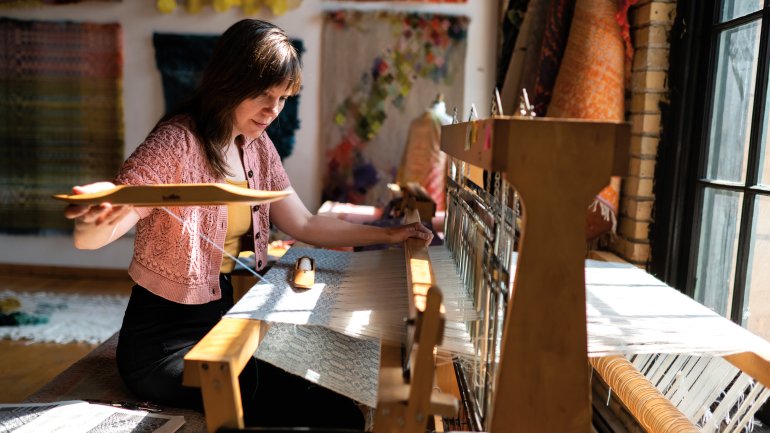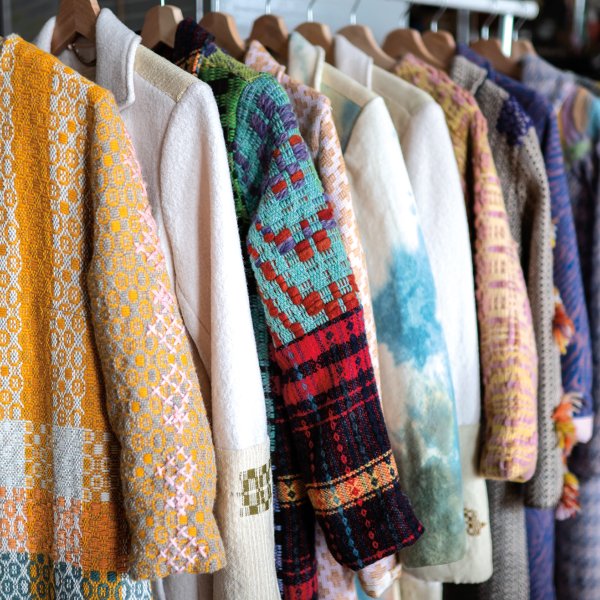Immersed in Beauty
Immersed in Beauty
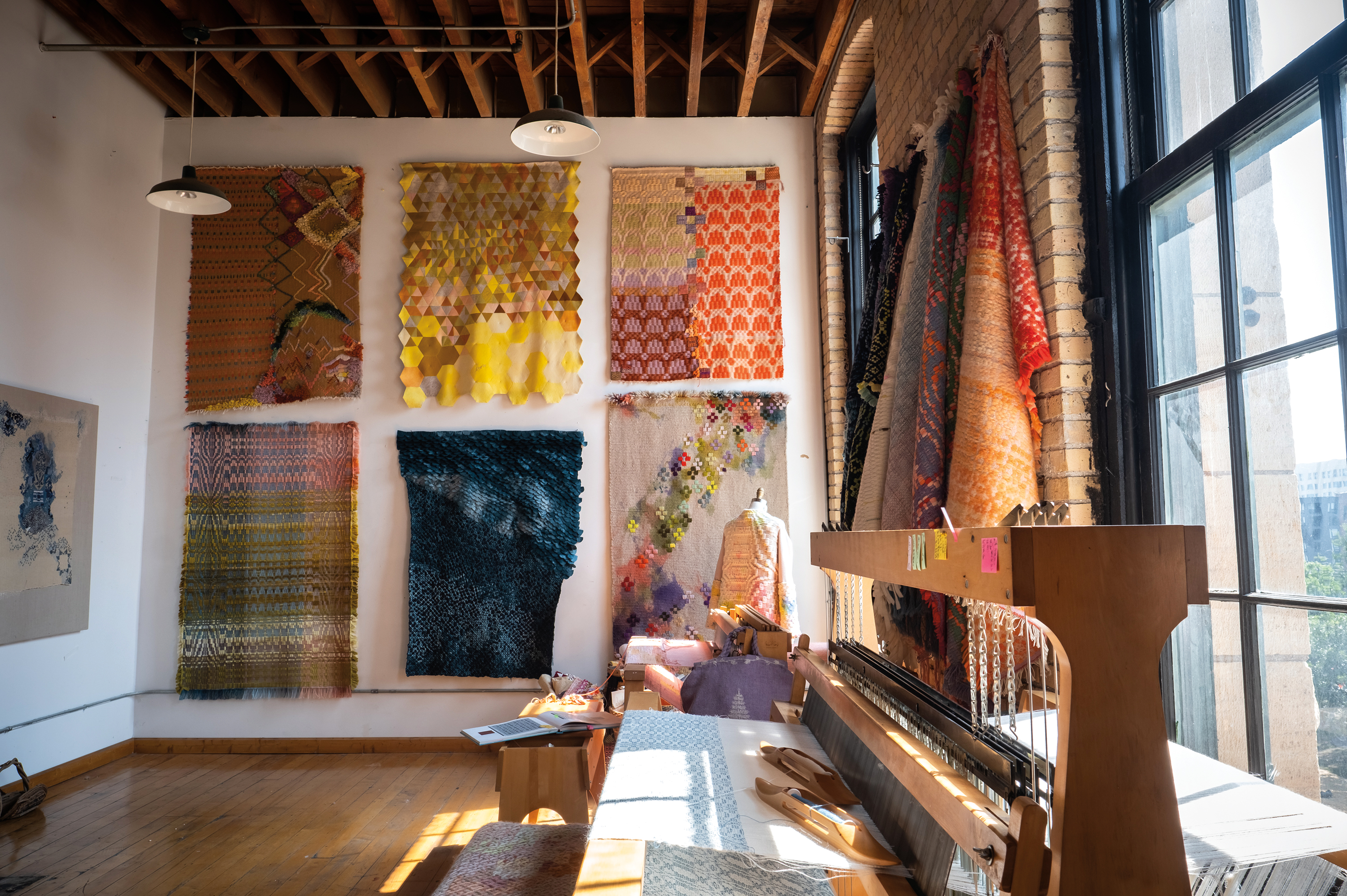
When I wake up in my Minneapolis home in winter, the first thing I do is peel back the bedside curtain to assess the day. Sometimes there’s a fresh blanket of white snow covering the ground and powdering the trees. If it’s very cold out, I sip my cup of hot black coffee and consider how many woolen layers I’ll need to pile on for my commute to my studio.
Having moved back to the North two years ago, after over a decade living in the rural Appalachian Mountains, I’m still getting used to the climate. I’d forgotten that just a little sun can make the day a whole lot brighter, with light reflecting off a sparkly white cloak that envelops the city.
I put on my mittens, hat, scarf, and big red puffy coat zipped all the way up. Then I slide over the icy streets of my South Minneapolis neighborhood and hop on the light-rail train that deposits me at my studio on the edge of downtown. It’s on the third floor of a towering limestone building—an appliance warehouse turned cracker factory turned art studios—which is one of the last art spaces in this once-thriving art neighborhood.
My studio is where I find my inspiration: paint on paper, threads on a loom. The feeling there seems to dictate my day, my mood wandering with the weather.
If the sun is pouring in, warming up the room, I tend to get energized, working across mediums—weaving at the loom or painting on the floor—basking in the space as the light bounces off the exposed beams in the ceiling, the bright white walls, and the worn patchwork wooden floors.
If it’s a cold, dark morning, I tend to be more inward. I make a warm herbal tea and work on something more technical, like warping a loom or prepping paper or gessoing a canvas for a new work. I like to think of the darkness as a time to prepare for the light again. I think of an interview with the poet Ruth Stone, where she described her inspiration as a thunderous train of air that runs through her. When the inspiration comes, I need to be ready for it.
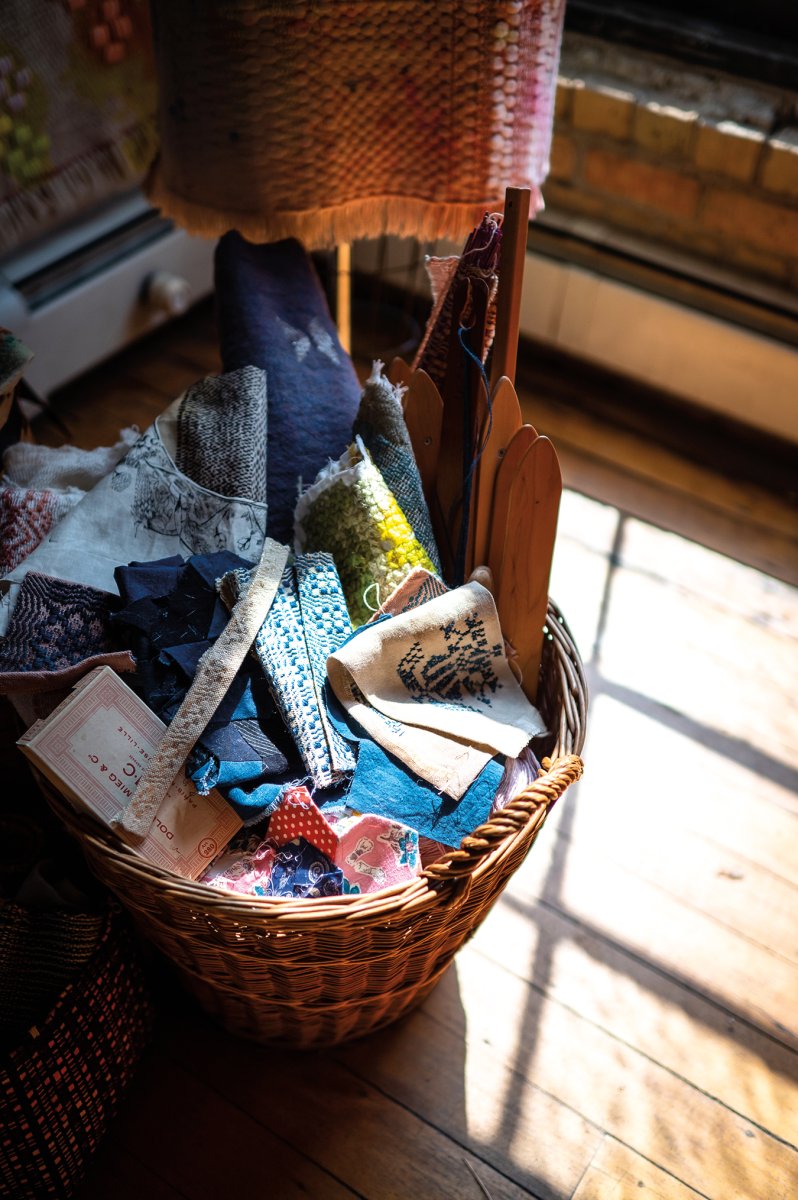
A basket full of weaving tools, embroideries, quilt squares, and handwoven cloth waits to be incorporated into future textile artworks. Photo by Caroline Yang.

Amber M. Jensen pins a small painted sketch of an imaginary landscape to her inspiration wall. Here, the artist weaves together two of her drawings on paper. Photo by Caroline Yang.

Amber M. Jensen's floor housing her personal archive of notes, sketchbooks, and other reference books. Photo by Caroline Yang.
My space energizes me, jolts me out of my cycling inner dialogue and into the action of creation. I allow myself to improvise. If something feels interesting—like a cross-stitch embroidery I made of two birds held together by a heart, where the ivory stitches turned light blue from the darkly dyed indigo ground cloth I’d embedded them into—I tack it to the wall, stand back, and squint. As I create work, I drape my art across my dress form or lay it on the floor. My studio is filled with these seemingly disparate handmade things that live next to each other, and my mission is to find connections between them. Art happens in those in-between spaces. When that occurs, it feels like magic. And if I’m patient, my work becomes timeless.
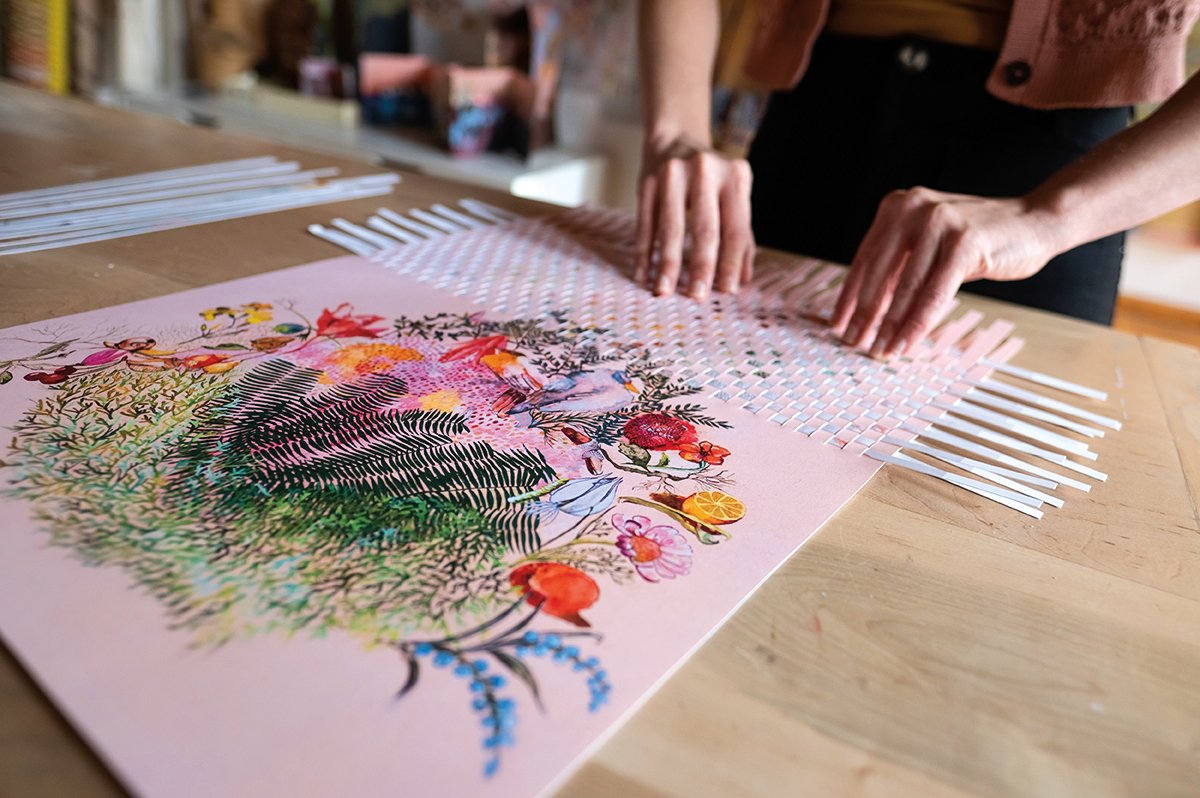
Jensen weaves together two of her drawings on paper. Photo by Caroline Yang.
Sometimes I can live with something in my space for a whole year before it finds its way into my art—often even longer. I think this patience is really my secret ingredient when it comes to making art. I need to allow time and space for these bits to find their own way, to mystically somehow absorb more of me and my life experience, before taking their creative places. I think good art needs that. My work gains meaning after I patch together all these pieces that represent how I felt on particular days. It’s a memorial to my life as it is lived in moments.
This is a place where I’m safeguarded from sabotage. Everything I create comes from a place of complete freedom.
Amber M. Jensen
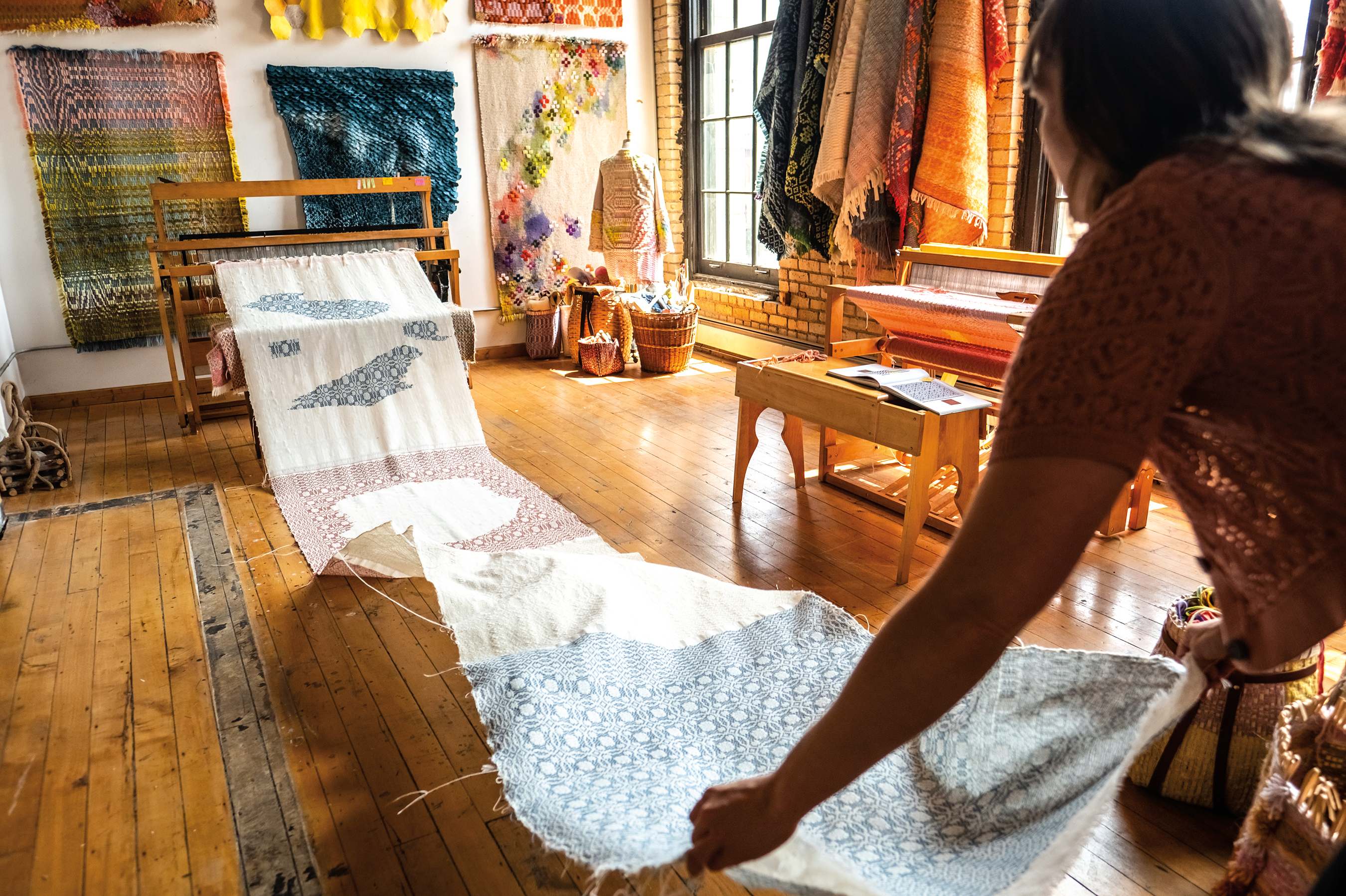
It’s also very important to my process that there be a lot of open space around me, my equipment, and my materials. With so much to look at, my eye needs a lot of breathing room to absorb all of it. Spaced around the studio are several hand-me-down looms, warped up with various in-process weaving threads, and two large Scandinavian-design maple worktables, handmade by my father. The well-loved tables are now full of scratch marks, with worn indentations on the corners from the many spools of yarn wound around the winding device I clamp to them. I love the marks on the tables, as they remind me of all my projects and the countless times I’ve poured my heart out into the work over the years.
In the back by the boxes of storage are all of my dye pots, tiny jars of pigment, and jugs of vinegar that I use to paint my wool. I hand-paint my threads before adding them to the loom.
Or if I feel the cloth is in need of a more dynamic color composition, I spontaneously drip dye over the weaving after it’s been unfurled from the loom, saturating it with wet pools of color.
Weaving is a process tied to a grid. The patterns embedded in that grid often remind us of something very old and nostalgic. Something from a simpler time before mass production, made by hands rather than machines, like that well-loved blanket found in a grandmother’s attic. The grid gives a structure and form to the light and to the color that comes with it. My art can then carry that energy to other spaces across the world.


